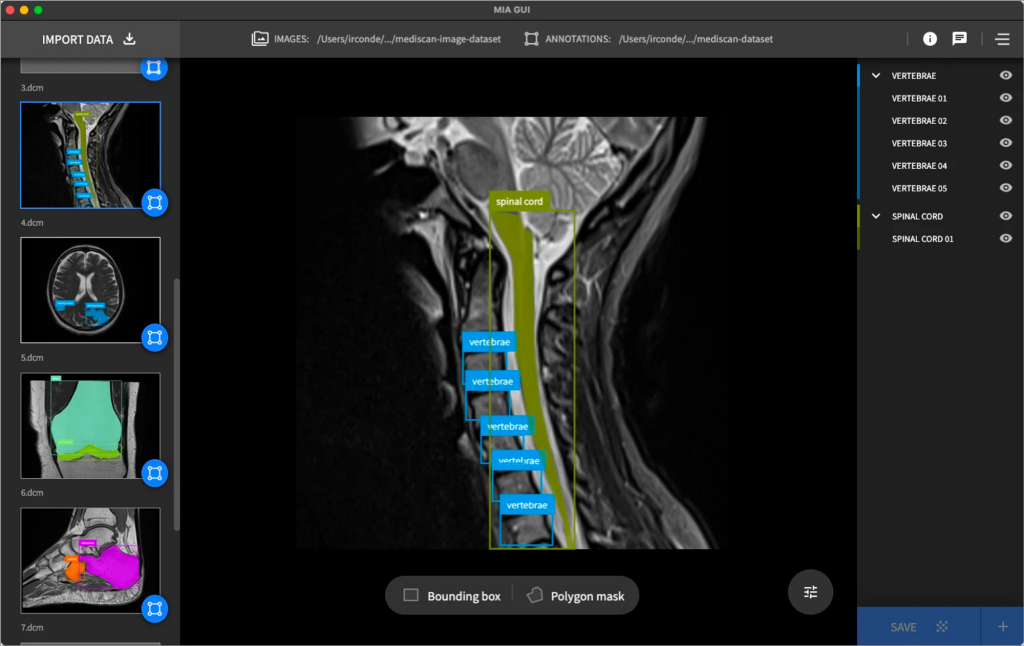From the dynamic labs of the Emerging Analytics Center (EAC) comes an innovative software tool ready to assist in navigating the world of medical image datasets – the Medical Imaging Annotation tool, affectionately known as M.I.A.

M.I.A. represents a significant collaborative achievement. Under the guidance of Dr. Ivan Rodriguez-Conde, a dedicated team, including James Bromley, a former CS student from UA Little Rock, and Dako Albeik and Luka Woodson, computer science undergraduates at UALR, has worked tirelessly on this project. The tool is the result of an intensive, EAC-funded research initiative focused on enhancing how we create, annotate, and understand medical image datasets, specifically in the industry-standard Digital Imaging and Communications in Medicine (DICOM) format.
The tool’s unique modular architecture is a distinctive hallmark of M.I.A. This structure not only facilitates efficient location, marking, and labeling of areas of interest on medical images but also makes room for continual advancement and adaptation. As it stands, the software’s capabilities include a suite of annotation tools such as polygon masks, bounding boxes, and text labels, all integral in the medical imaging annotation process.


Looking ahead, the team behind M.I.A. anticipates exciting enhancements that will take the tool’s functionality to the next level:
- Automatic Annotation: A significant update in the works is the integration of an automatic annotation module. This feature will break free from the limitations of predefined algorithms, allowing users to integrate their specific object detection and image segmentation algorithms, enhancing M.I.A.’s adaptability and versatility.
- Touch-Based Input: M.I.A.’s future also includes plans for a touch-based input system. This feature would enable users to create annotations using symbolic hand gestures combined with pen input. This intuitive interaction mode aims to align the software’s user experience closer to real-world annotation.
- Exploratory Data Analysis Tools: To help users gain a deeper understanding of their data, the team plans to incorporate exploratory data analysis tools. These tools aim to facilitate data quality assessment and inform decisions about feature selection, data preparation, and modeling approaches, making the data utilization process more effective.
The EAC team extends an invitation to all interested parties to explore M.I.A.’s functionalities and to contribute to its future development through insightful feedback. M.I.A. is compatible with Windows, OS X, and Linux systems and can be downloaded for free from the official website at http://mia-ml-annotation.tech/.
As M.I.A. continues to evolve, the team eagerly awaits your insights and looks forward to seeing how this tool will contribute to the medical imaging community. M.I.A. is not just an addition to the tools in this field; it represents a step forward in enhancing the way we interact with and understand medical image datasets.






